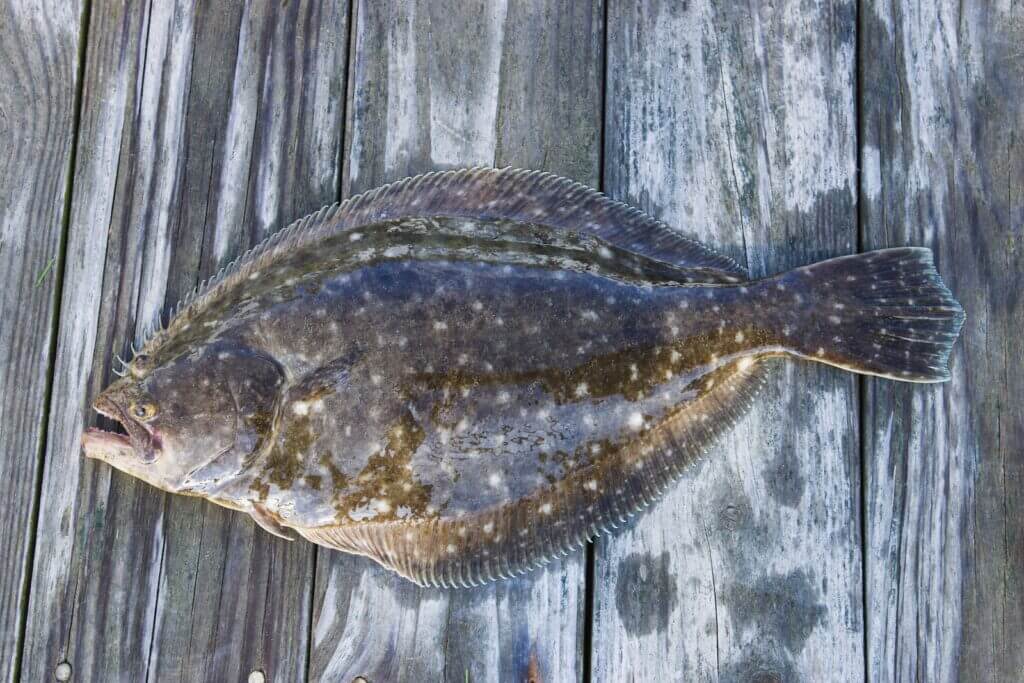Flounder gigging involves hunting flatfish species like southern flounder by wading shallow waters at night and spearing them with a multi-pronged flounder gig. This exciting fishing method produces delicious flounder for the table. Read on for everything you need to know about getting started with gigging your own flounder.
Introduction to Flounder Gigging
Flounder gigging has roots tracing back to Native American and early colonial fishing practices along the Atlantic and Gulf Coasts. The pastime combines hunting skills, an understanding of flounder behavior, and specialized gigging gear to fill a cooler. Here’s a quick overview:
What is Flounder Gigging?
Flounder gigging is catching flounder using a multi-pronged spear rather than rod and reel. Anglers slowly wade shallow saltwater flats at night shining lights to spot, then gig flounder resting on the bottom.
Why is it Popular?
It’s an exciting way to secure tasty flounder. Flounder move into the shallows at night to ambush baitfish making them easy targets for gigging. A single gig can spear several flounder quickly.
Where Can I Go?
Flounder gigging hotspots are found along the Atlantic coast and Gulf of Mexico. Prime shoreline areas have sandy or muddy bottoms holding flounder.
When is the Best Time?
Early fall when water temperatures cool into the 60s is peak gigging season. Low tides and calm winds create ideal conditions to see flounder.
Now that you know the basics, let’s explore the specialized gear and techniques that make flounder gigging successful.
Flounder Gigging Gear You’ll Need
Flounder gigging requires a specific set of equipment for spotting, approaching, and spearing flounder after dark. Having the right gear makes a major difference:
Flounder Gig
A flounder gig is a long pole with prongs at the end for spearing fish. Choose gigs with 3-5 prongs a minimum of 5 inches long. Stainless steel resists corrosion.
Powerful Spotlight
A headlamp and handheld spotlight in the 500+ lumen range helps spot flounder’s outline on the bottom when wading through murky water at night.
Drift Sock
A drift sock dragged behind your kayak or boat keeps speed minimal so flounder aren’t spooked before you can get within gigging range.
Landing Net
Once speared, a big landing net helps secure flounder and remove them from the gig prongs for transfer to a cooler.
Waders and Footwear
Neck-high waders and heavy non-slip footwear provide warmth and traction for walking on slick, uneven surfaces while gigging.
Gloves
Cut-resistant gloves safeguard hands when handling toothy, injured flounder during removal from gig prongs.
Cooler
A large cooler keeps your caught flounder fresh during transport once the gigging action wraps up.
With the right gear, you’re equipped to start gigging. Next let’s cover choosing and caring for the essential flounder gig itself.
Choosing and Maintaining Your Flounder Gig
The flounder gig allows anglers to strike instantly when fish are spotted. Selecting the right model and keeping it in working order is critical:
Choosing Your Gig
Stick to a 5-6 foot gig pole for optimal maneuverability and leverage. Pick 3-5 prongs at least 5 inches long to sufficiently penetrate the flounder’s body. Curved prongs help keep fish from twisting free.
Caring for Your Gig
Always rinse the gig pole and prongs with freshwater after each use to prevent corrosion. Inspect for cracked welds or burrs and file down if found. Sharpen prong tips as needed. Recoat prongs with food-grade oil to limit rust.
Invest in a quality flounder gig made of durable, corrosion-resistant materials. Provide routine care to keep the gig deadly sharp and in flawless working condition all season long.
Mastering Flounder Gigging Techniques
Success gigging flounder relies on correct techniques for finding and spearing fish:
Locating Flounder
Flounder hold tight to bottom, often near structure like docks and channel edges. Shine lights across the bottom while moving slowly to detect flounder. Stay quiet and approach cautiously once spotted.
Gigging the Flounder
Once within 4 feet, aim the gig 2 inches behind the flounder’s head and power downwards piercing completely into the bottom to secure the fish. Firm pressure straight down is key.
Helpful Tips
- Time trips around moving tidal water 2 hours before or after low tide.
- Gig sideways rather than straight-on to increase your chances of landing fish.
- Consider using a kayak or small boat to cover more gigging territory efficiently.
Take a stealthy approach, strike decisively once in range, and follow best practices to fill your gigging limit.
Flounder Gigging Safety
While exciting, flounder gigging poses some inherent risks to be aware of:
- Wear protective clothing and be careful navigating uneven and slippery surfaces in the dark or risk slips and falls.
- Know the tides and offshore structure so you don’t get stranded or disoriented.
- Flounder have sharp teeth and spines so wear heavy gloves when handling.
- Speared flounder can twist suddenly, so point gigs away from your body. Support fish with a net.
- Cuts from gig prongs should be immediately washed with soap and water. Seek medical help for deep puncture wounds at risk of infection.
Planning your gigging trips around optimal tidal and weather windows while taking safety precautions will keep the outing fun.
Conclusion
As we’ve covered, flounder gigging is an exciting and productive light-tackle fishing method anyone can master. Key tips include having quality gigging gear like powerful lights, stealthy footwear, and a well-maintained flounder gig. Hunt patiently in proven areas during optimal conditions. Once you spot your quarry, move into range quietly then spear accurately – you’ll be rewarded with delicious fillets! Seek local guidance, go often to hone your skills, and follow best safety practices. With the techniques in this guide, you’ll be gigging limits of tasty flounder in no time.










